McLaren Artura Spider First Drive Review: Plug-in hybrid supercar drops its top

MONACO – The easy way to turn the McLaren Artura into a convertible would have been to chop off the coupe’s roof and call it a day. The company chose a more difficult approach: In addition to a power-folding top, the Artura Spider inaugurates a long list of updates that the coupe will also benefit from.
Rolling out improvements on the Spider makes sense: McLaren notes that convertibles normally represent between 70% and 75% of a model line’s sales, and the Artura is particularly important as it’s the newest member of the range. It’s a gateway drug that leads to bigger cars like the 750S.
McLaren remains SUV-free (for the time being; that’s going to change soon) but there’s one trend it couldn’t escape: electrification. Like the coupe, the Spider is powered by a plug-in hybrid drivetrain that consists of a 3.0-liter twin-turbocharged V6, an axial-flux electric motor, a liquid-cooled 7.4-kilowatt-hour lithium-ion battery pack, and an eight-speed dual-clutch automatic transmission.
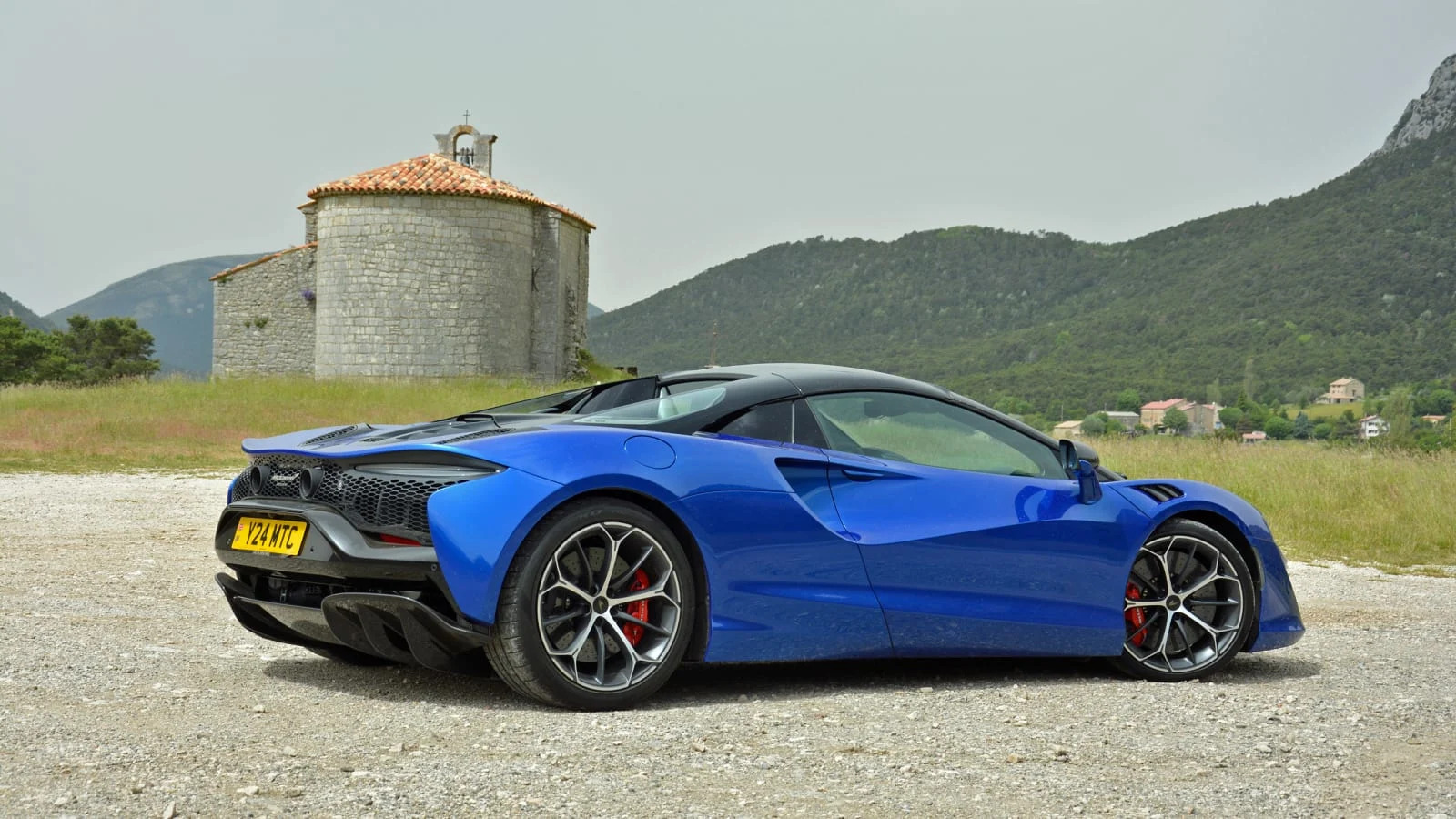
The system develops 690 horsepower at 7,500 rpm and 531 pound-feet of torque at 2,250 rpm. For context, the Artura made its debut with a 671-horsepower version of this drivetrain. The 19-horse bump is one of the changes that McLaren is ushering in with the Spider for the 2025 model year. It also recalibrated the power curve and made the transmission’s shifts approximately 25% faster.
McLaren quotes a 0-to-60-mph time of 3 seconds. Keep your foot down and you’ll see 124 mph in 8.4 seconds. If you’ve got enough tarmac, you can keep going until the speedometer displays 205 mph. Alternatively, the electric motor can move the Artura on its own for about 21 miles at up to 81 mph. Deceleration is as impressive as acceleration: The Spider takes 102 feet to stop from 62 mph.
Engineers also redesigned the engine mounts, turned up the exhaust system’s volume, added revised brake ducts, and made hardware and software changes to the suspension. Inside, the big news is a newly-standard wireless device charger integrated into the center console. McLaren notes it devoted a considerable amount of effort to this part. If it were flat, like in many cars, the phone would ping-pong across the cabin when the Spider is being driven the way it was designed to be. The solution is a wireless charger-cupholder hybrid with a rubber insert to prevent the phone from flying away.
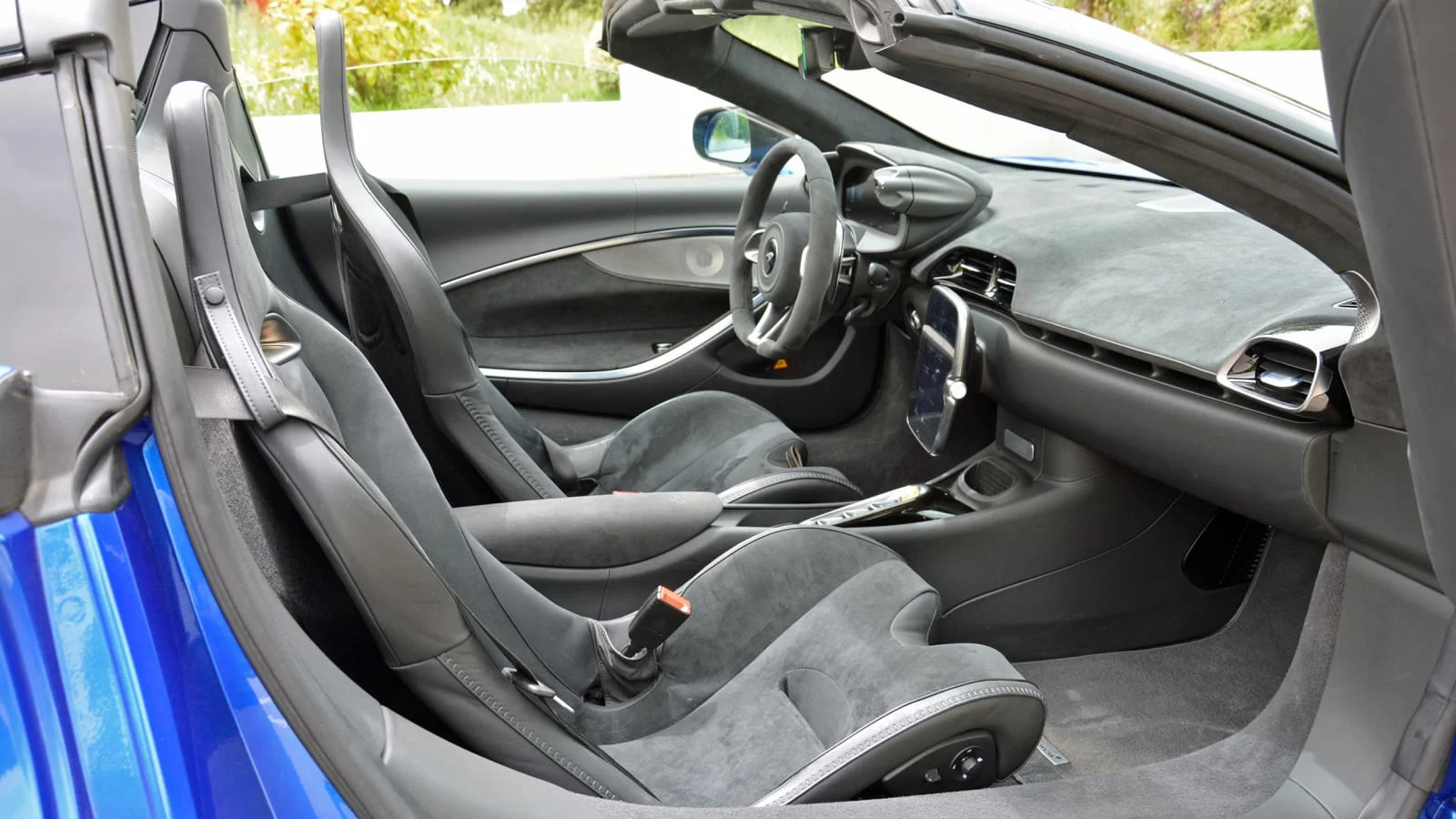
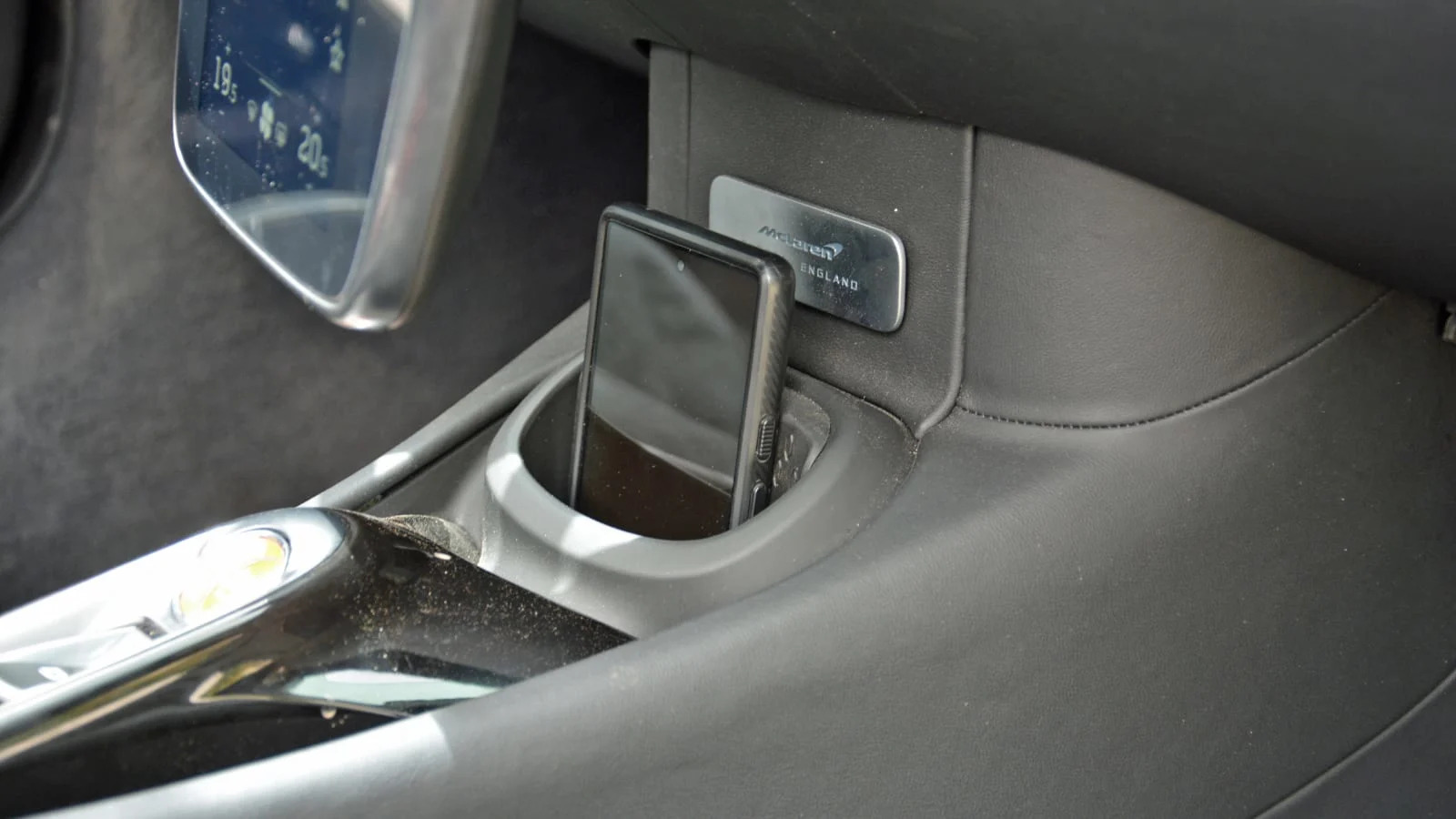
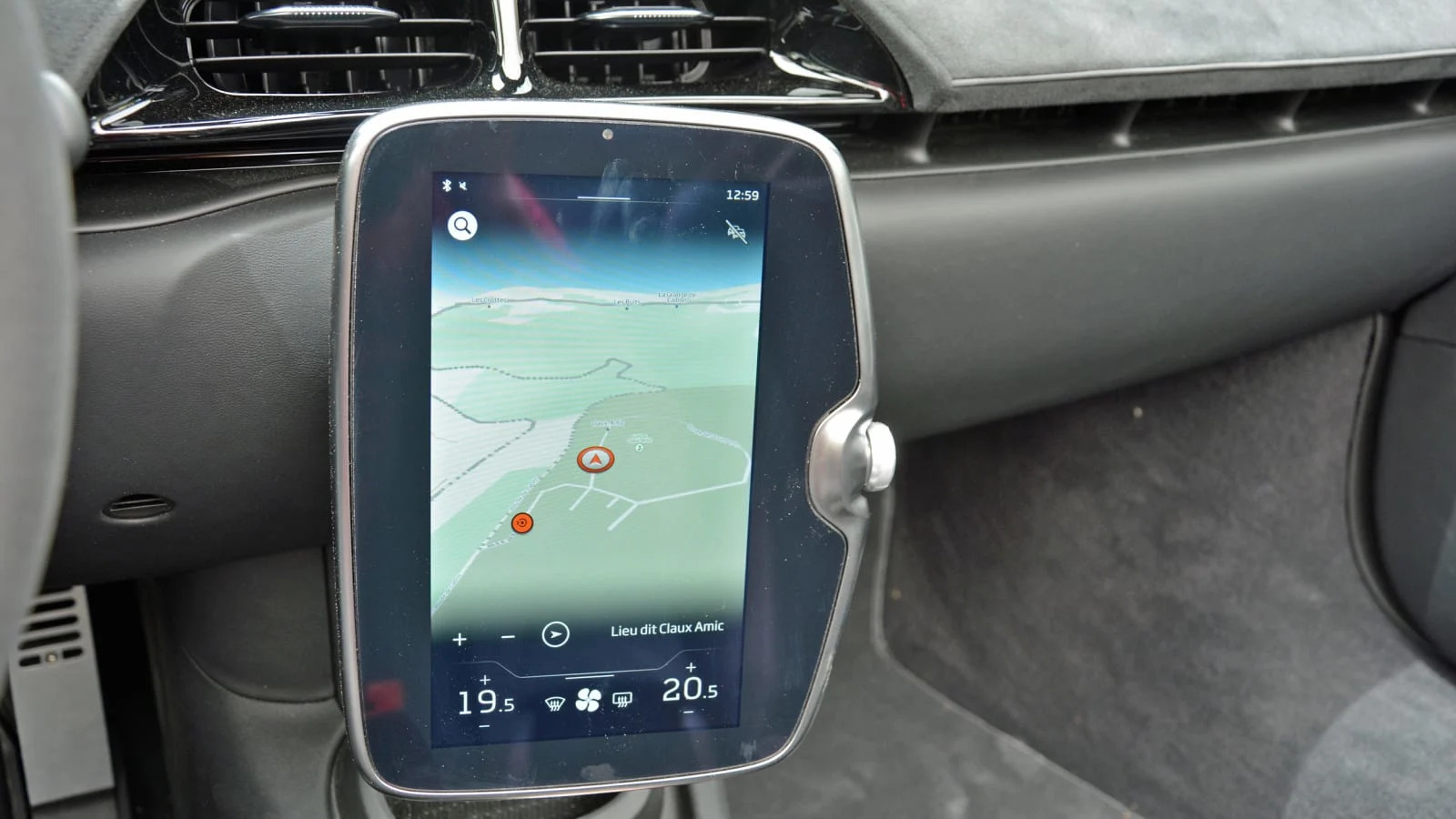
Lane departure warning and speed limit detection are newly standard, while blind-spot and rear cross-traffic warning systems are optional. Even a driver-focused car needs driving aids in 2024.
“There was nothing wrong with the original car, but we had ideas to make it even better,” summed up Andy Beale, a 22-year McLaren veteran who currently works as the company’s chief engineer.
Here’s what didn’t change: the chassis. Like its fixed-roof sibling, the Spider is built around a carbon fiber monocoque with aluminum subframes. The tub is stiff enough that McLaren didn’t need to add convertible-specific reinforcements, which in turn keeps weight in check. The roadster tips the scale at 3,439 pounds, a figure that makes it a mere 136 pounds heavier than the coupe. Hop in the coupe, take a relatively thin passenger for the ride, and you’ve just about matched the Spider’s weight.
The hard top deserves the blame for the weight gain. Linked to a mechanism that consists of eight (!) electric motors, it goes up or down at the push of a button in 11 seconds at speeds of up to 31 mph. McLaren added a kink it calls a “header gurney” to the windshield frame to act as a wind deflector, and there’s an optional electrochromic roof that lets light into the cabin even when the top is up.
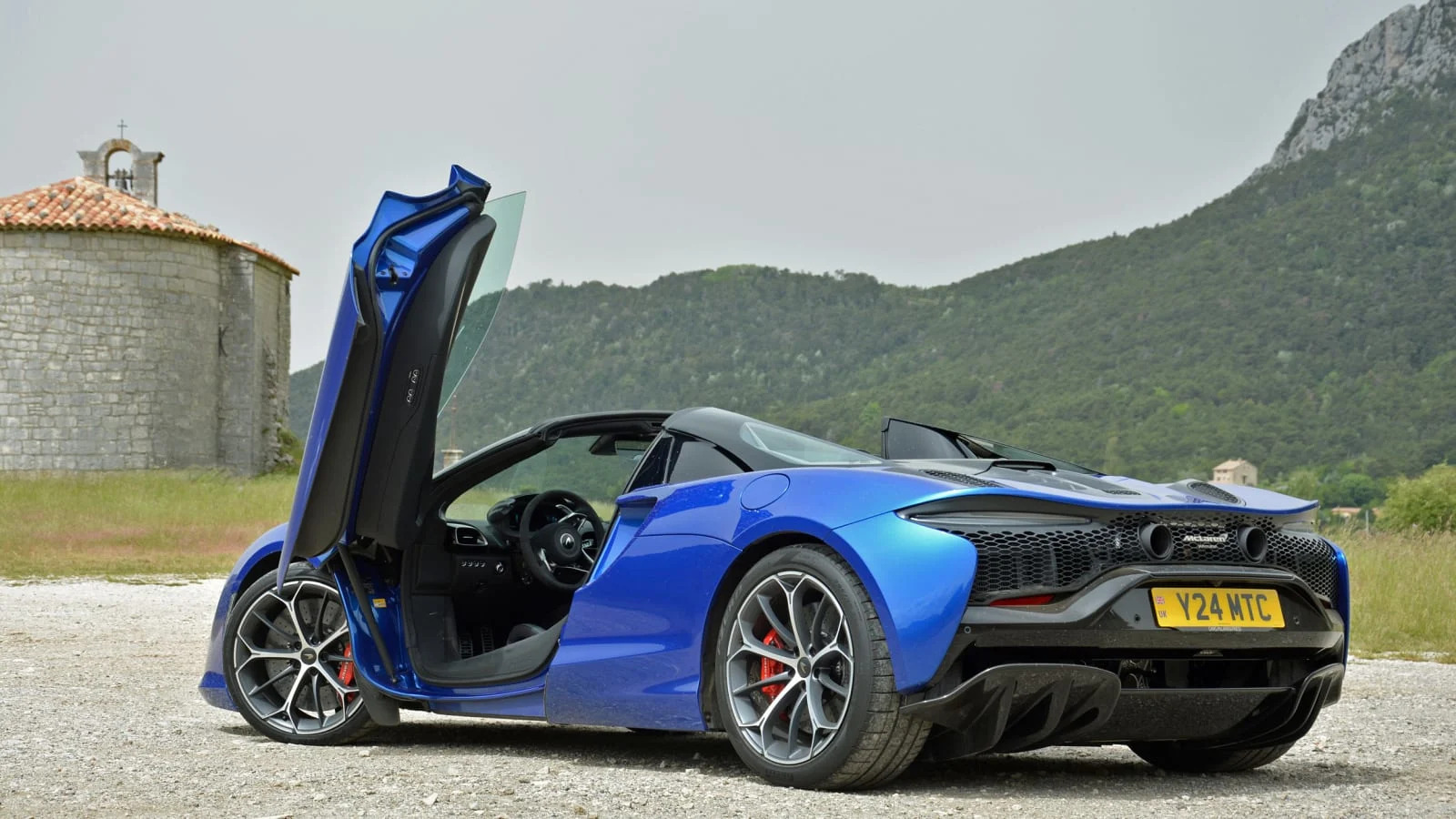
Finished in Volcano Blue, which is one of the more subtle colors available, the Spider draws eyeballs — it’s certainly not for those trying to keep a low profile. Whether you want to be the center of attention is irrelevant: You’ll turn every head the minute one of the dihedral doors pivots up. Even in a place like Monaco, where supercars that cost the price of a house teeter on the brink of mundanity, there’s something about unconventionally-hinged doors that stirs the mind. Folks gravitate around it expecting to see a famous person climb out. Put your phone down, it’s just me.
If the doors don’t pelt you into your 15 minutes of fame, pushing the ignition button will. McLaren paid special attention to the exhaust note. It wanted to add more sound to the driving experience — mission accomplished. There’s plenty, and I’m told it’s authentic. The V6 is louder with the top down, though not to the point where it’s annoying to live with, and the Spider has a sliding rear window that’s like a vertical sunroof. It’s a nice middle ground between closed-roof and open-roof: you can let the V6 serenade you with its song even when it starts raining sand in a usually sunny part of France.
Building a hybrid supercar is like squaring a circle. Electrification adds weight while skewing the weight distribution, which in turn affects handling in not-so-great ways. You wouldn’t advise a soccer player to go on a sumo wrestler’s diet right before the World Cup, right? McLaren is in a good position to solve this problem: It began dabbling in hybrid technology in 2013, when it launched the P1, and it learned a lot about trimming every ounce of excess mass through Formula 1. It offset the hybrid system’s weight in other areas (the windshield is made with thin glass, for example) and it used what’s left to its advantage. The battery is mounted low in the chassis, right behind the driver, to bring down the center of gravity. The mid-mounted V6 is 110 pounds lighter than the V8 found in other McLaren models, and its unusual 120-degree bank angle also helps lower the center of gravity.
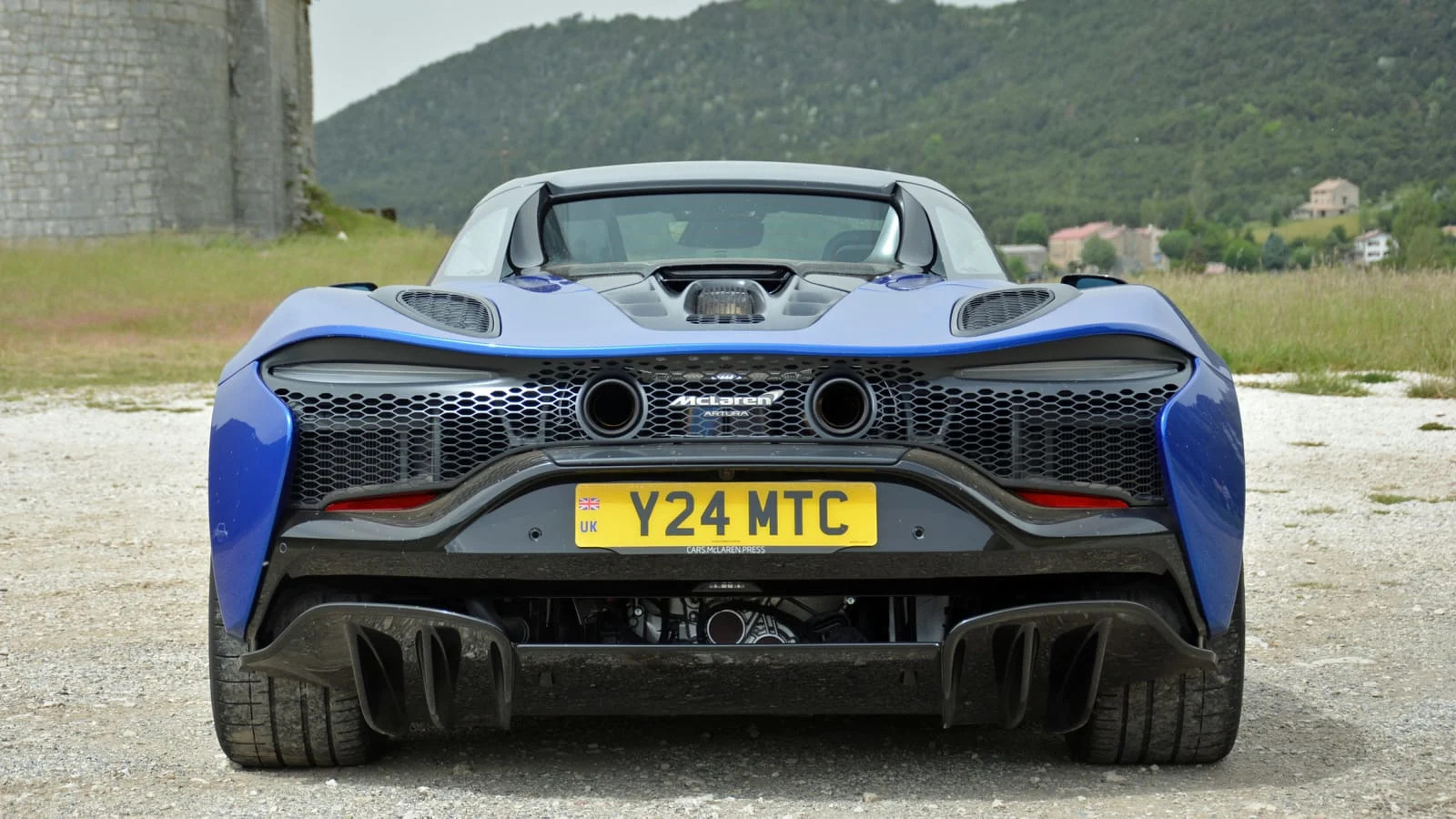
These numbers add up to a driving experience that’s unforgettable. McLaren’s driver-centric approach to developing a car shines through after a few minutes in the Artura Spider. It’s well-balanced, responsive, and just the right amount of playful, with none of the flimsiness you might expect to experience in a convertible. The best way to describe its acceleration is with an armada of expletives and superlatives. And, there’s no regenerative braking system, so the brake pedal feels totally normal, and the carbon-ceramic brakes deliver one hell of a bite when needed.
Steering is one of the Spider’s best attributes. McLaren uses an electro-hydraulic rack that’s quick, nicely weighted, and that provides excellent feedback. It’s an enthusiast’s dream: Whether you’re cruising on the highway or speeding up a mountain, you know exactly what the front wheels are doing. Keeping the Artura rear-wheel-drive contributes to the feeling of front-end lightness.
Those of us who grew up hearing tales of unruly supercars that need to be tamed before they can be enjoyed are in for a big surprise. Around town, or on the highway, there’s nothing daunting about the Artura Spider; it’s stunningly easy to drive. I wouldn’t recommend the Clubsport seats fitted to my test car if you’re planning on going on a long road trip, and I’ve seen tool boxes that were bigger than the trunk, but you could realistically use this roadster as a daily driver if it’s only you and a small bag. With that said, there’s a detail that’s weird even for a supercar: The Spider doesn’t have a glove box.
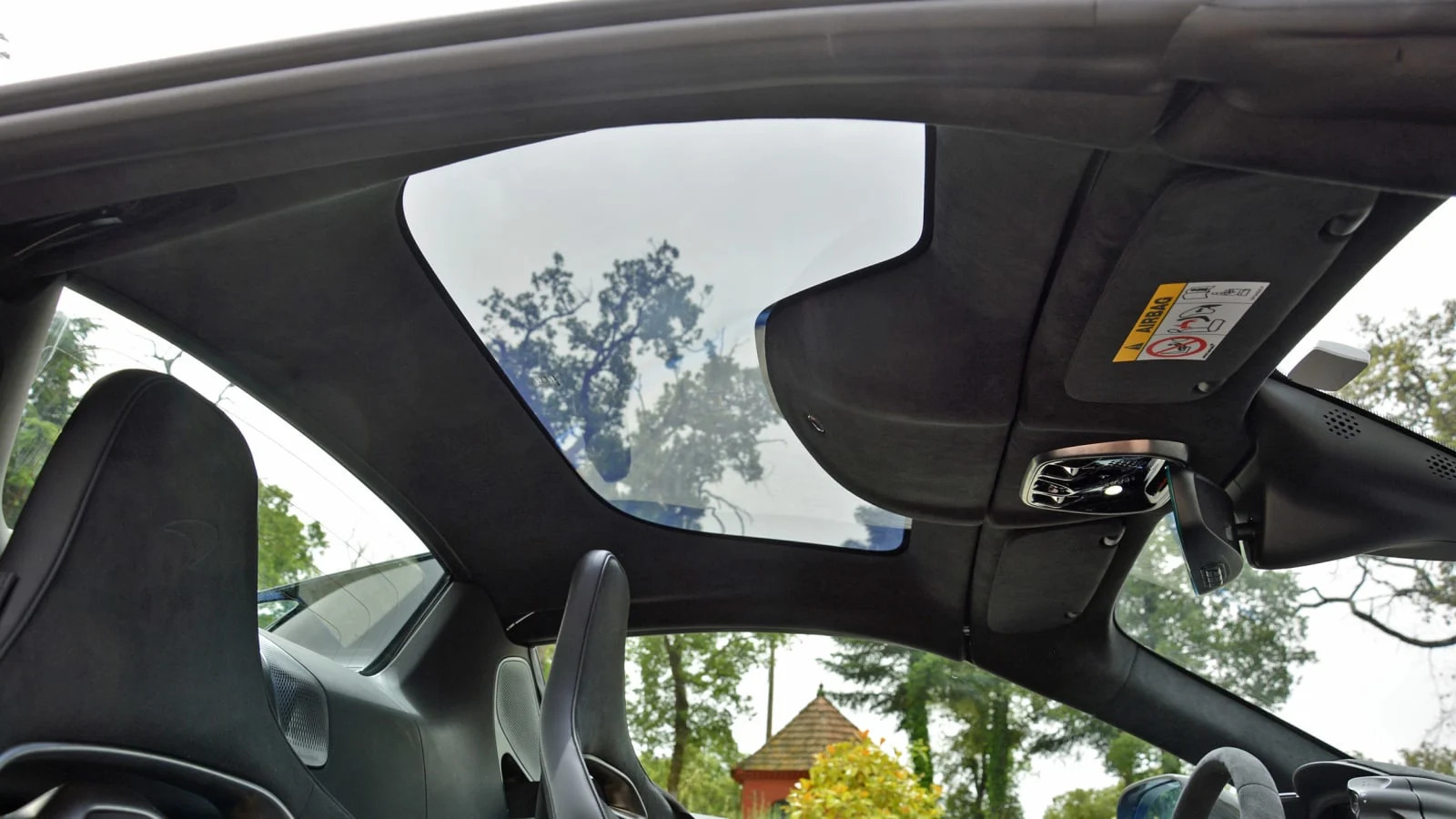
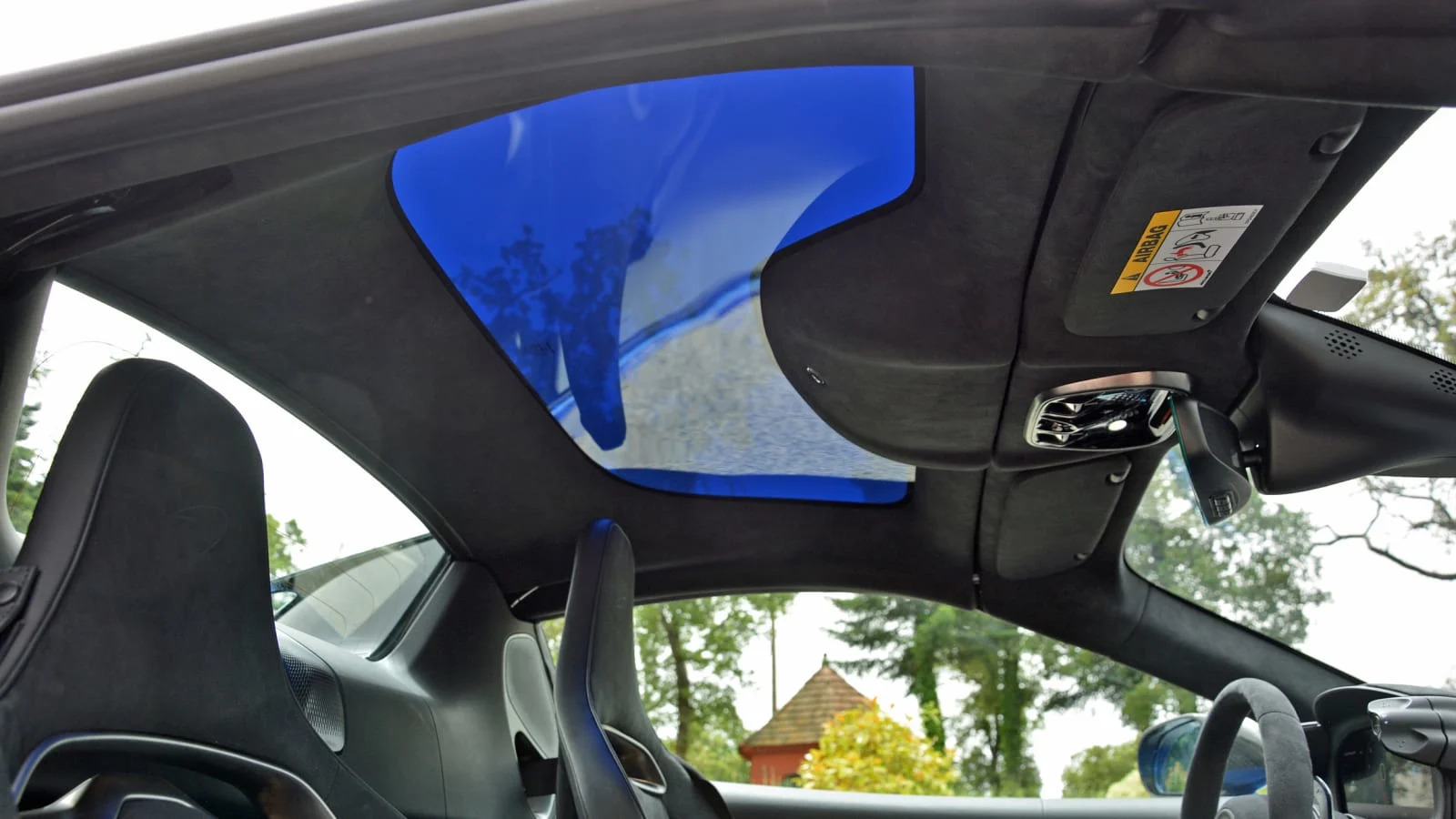
The transmission makes no effort to hide the fact that it was designed for fast-paced driving. It’s great when you’re moving: It delivers ultra-quick shifts, and there’s a button conveniently located on the left side of the instrument cluster that allows the driver to alternate between the manual and automatic modes. It’s a little clunky in stop-and-go-traffic, however. If it could talk, it would say, “This isn’t what I signed up for!” Speaking of the transmission, here’s a fun fact: There’s no reverse gear. Shift into reverse using the button on the center console, and the electric motor simply spins backward.
It can spin forward, too. Its main purpose is to inject more power into the driveline — it’s rated at 94 horsepower and 166 pound-feet of torque. On a secondary level, it can move the Artura on its own, albeit not very quickly and not very spiritedly. This function is primarily useful if you want to drive into a city with emissions restrictions or if you want to get home without waking up your neighbors. When the drivetrain’s full output is unlocked, the motor and the engine refrain from engaging in tribal warfare and work together seamlessly. The driving experience doesn’t scream “hybrid!”
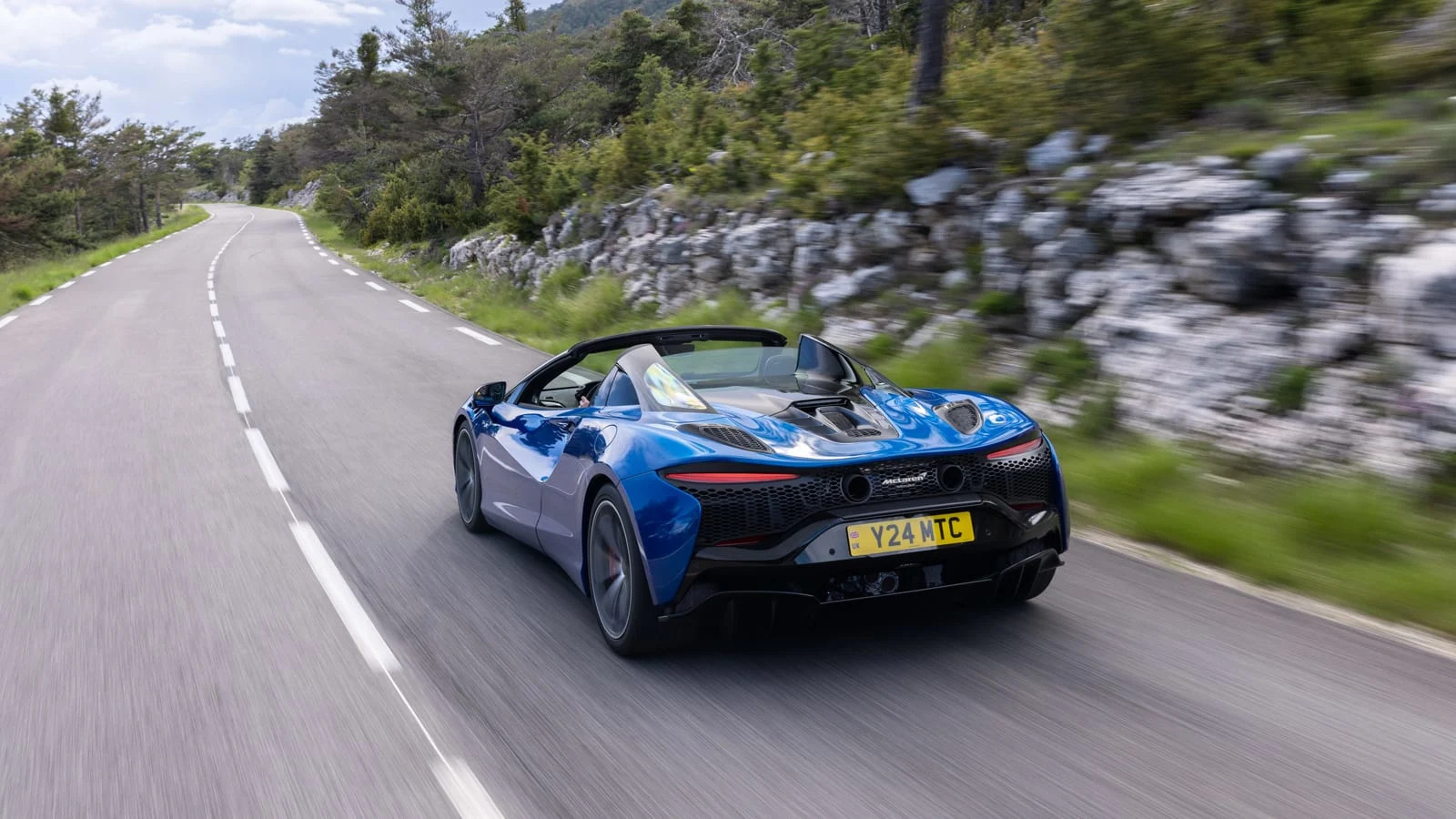
Whether the Artura is better as a coupe or as a Spider is a matter of personal preference, but what’s certain is that the updates make both variants better all around. Engaging to drive, nicely built, and easy to live with, the Artura Spider proves McLaren is a force to be reckoned with in the supercar world.
Deliveries of the 2025 McLaren Artura Spider will begin in the third quarter of 2024. Pricing starts at $281,008 including $5,000 in transportation and port processing charges and a $2,208 American Accessories Pack, which bundles a travel bag, tire cradles, and a car cover, among other items.
The updated 2025 Artura coupe will launch later in 2024 priced at $256,308, and McLaren isn’t forgetting about the current Artura owners who will soon have a less powerful version of an existing model — that’s a big faux-pas in the supercar world. The company will offer these customers a free software update that unlocks the 19 extra horses. They’ll still need to charge their phone the old-fashioned way, however.



